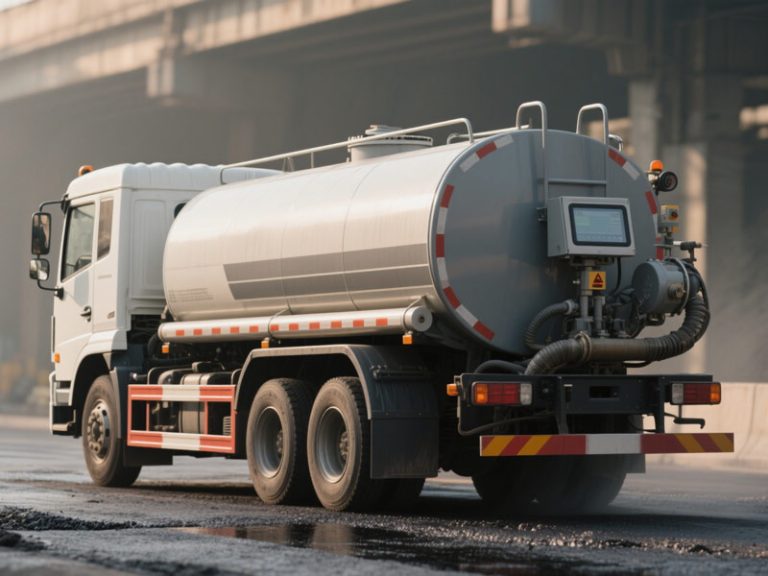When using an asphalt distributor to spray high-viscosity modified asphalt, achieving a uniform asphalt film is crucial for effective application and performance. The design of the nozzles, including factors like aperture size, atomization angle, and spraying pressure, plays a significant role in preventing issues such as discontinuous spraying or local accumulation. This article explores how these elements work together to enhance the performance of asphalt distributors, especially when handling high-viscosity and emulsified asphalt.

Tailoring Nozzle Design for High Viscosity
The nozzle design of an asphalt distributor is specifically engineered to accommodate the unique flow characteristics of high-viscosity modified asphalt. Adjustable nozzles are commonly used to adapt to varying viscosities by changing the spray angle and aperture size. This versatility is essential because high-viscosity asphalt requires different spraying parameters compared to standard asphalt.
For instance, a narrower aperture may be employed to create a more focused spray pattern, thereby improving the uniformity of the asphalt film. Additionally, varying the atomization angle can help distribute the asphalt more evenly across the surface, preventing local accumulation. By fine-tuning these parameters, operators can ensure that the asphalt is applied consistently, which is critical for achieving optimal bonding and performance.

Maintaining Stable Spraying Pressure
Another essential aspect of spraying high-viscosity asphalt is maintaining stable spraying pressure, particularly in low-temperature environments where viscosity can increase. A multi-stage pressure boosting system is often integrated into asphalt distributor to ensure that the spraying pressure remains consistent. This system compensates for changes in viscosity due to temperature fluctuations, allowing for a steady flow of asphalt.
By maintaining stable pressure, the distributor can prevent issues such as discontinuous spraying, which can occur if the viscosity of the asphalt increases unexpectedly. This consistency not only improves the quality of the application but also enhances the efficiency of the spraying process, reducing the likelihood of rework or material wastage.

Considerations for Emulsified Asphalt
When handling emulsified asphalt, additional considerations come into play regarding nozzle design. The coordination between demulsification time and spraying speed is critical to prevent poor bonding caused by the excessive evaporation of water. Emulsified asphalt is sensitive to temperature and environmental conditions; thus, the nozzle must be designed to optimize the timing of the spray application.
Operators need to ensure that the spraying speed is synchronized with the demulsification process. If the asphalt is sprayed too quickly after emulsification, water may evaporate excessively, leading to inadequate bonding. Therefore, the nozzle design should allow for adjustments in spray speed depending on the specific characteristics of the emulsified asphalt being used.

Conclusion
The efficient operation of an asphalt distributor when spraying high-viscosity modified asphalt relies heavily on the careful design of its nozzles and the management of spraying pressure. By tailoring nozzle design to accommodate varying viscosities and ensuring stable pressure, operators can achieve a uniform asphalt film that enhances performance and durability. Additionally, when working with emulsified asphalt, attention to the coordination between demulsification time and spraying speed is essential for optimal bonding. Through these measures, asphalt distributors can effectively meet the challenges presented by different types of asphalt, ensuring high-quality applications that stand the test of time.